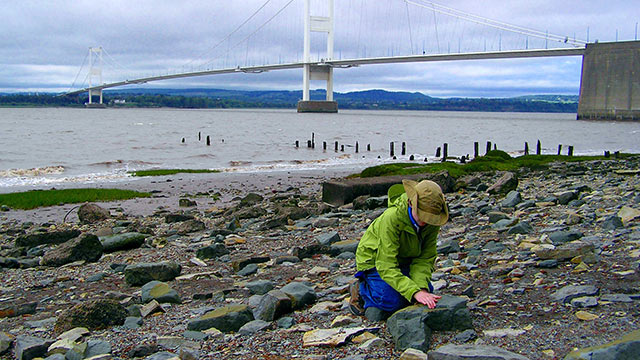Microplastics can deposit and linger within riverbeds for as long as seven years before washing into the ocean, a new study has found.
Because rivers are in near-constant motion, researchers previously assumed lightweight microplastics quickly flowed through rivers, rarely interacting with riverbed sediments.
Now, researchers led by Northwestern University and the University of Birmingham in England, have found hyporheic exchange — a process in which surface water mixes with water in the riverbed — can trap lightweight microplastics that otherwise might be expected to float.
The study was published today (Jan. 12) in the journal Science Advances. It marks the first assessment of microplastic accumulation and residence times within freshwater systems, from sources of plastic pollution throughout the entire water stream. The new model describes dynamical processes that influence particles, including hyporheic exchange, and focuses on hard-to-measure but abundant microplastics at 100 micrometers in size and smaller.

“Most of what we know about plastics pollution is from the oceans because it’s very visible there,” said Northwestern’s Aaron Packman, one of the study’s senior authors. “Now, we know that small plastic particles, fragments and fibers can be found nearly everywhere. However, we still don’t know what happens to the particles discharged from cities and wastewater. Most of the work thus far has been to document where plastic particles can be found and how much is reaching the ocean.
“Our work shows that a lot of microplastics from urban wastewater end up depositing near the river’s source and take a long time to be transported downstream to oceans.”
Packman is a professor of civil and environmental engineering at Northwestern’s McCormick School of Engineering and director of the Northwestern Center for Water Research. He also is a member of the Program on Plastics, Ecosystems and Public Health at the Institute for Sustainability and Energy at Northwestern. Jennifer Drummond, a research fellow at the University of Birmingham and former Ph.D. student in Packman’s laboratory, is the study’s first author.
Modeling microplastic movement
To conduct the study, Packman, Drummond and their teams developed a new model to simulate how individual particles enter freshwater systems, settle and then later remobilize and redistribute.
The model is the first to include hyporheic exchange processes, which play a significant role in retaining microplastics within rivers. Although it is well-known that the hyporheic exchange process affects how natural organic particles move and flow through freshwater systems, the process is rarely considered microplastic accumulation.
“The retention of microplastics we observed wasn’t a surprise because we already understood this happens with natural organic particles,” Packman said. “The difference is that natural particles biodegrade, whereas a lot of plastics just accumulate. Because plastics don’t degrade, they stay in the freshwater environment for a long time — until they are washed out by river flow.”
To run the model, the researchers used global data on urban wastewater discharges and river flow conditions.
Trapped in headwaters
Using the new model, the researchers found microplastic pollution resides the longest at the source of a river or stream (known as the “headwaters”). In headwaters, microplastic particles moved at an average rate of five hours per kilometer. But during low-flow conditions, this movement slowed to a creep — taking up to seven years to move just one kilometer. In these areas, organisms are more likely to ingest microplastics in the water, potentially degrading ecosystem health.
The residence time decreased as microplastics moved away from the headwaters, farther downstream. And residence times were shortest in large creeks.
These deposited microplastics cause ecological damage, and the large amount of deposited particles means that it will take a very long time for all of them to be washed out of our freshwater ecosystems.”
civil and environmental engineer
Now that this information is available, Packman hopes researchers can better assess and understand the long-term impacts of microplastic pollution on freshwater systems.
“These deposited microplastics cause ecological damage, and the large amount of deposited particles means that it will take a very long time for all of them to be washed out of our freshwater ecosystems,” he said. “This information points us to consider whether we need solutions to remove these plastics to restore freshwater ecosystems.”
The study, “Microplastic accumulation in riverbed sediment via hyporheic exchange from headwaters to mainstems,” was supported by a Royal Society Newton International Fellowship, Marie Curie Individual Fellowship, the German Research Foundation, the Leverhulme Trust and the National Science Foundation.


